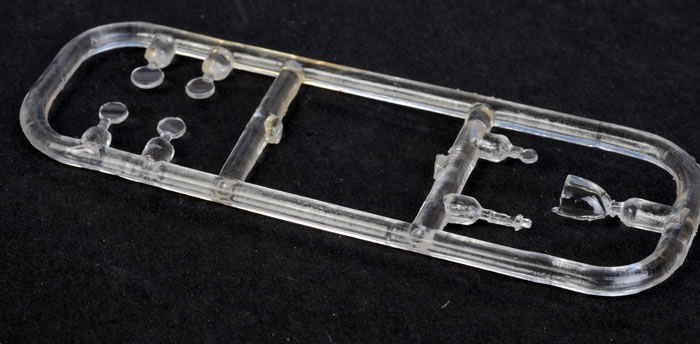|
Virgin Atlantic Global Flyer

Amodel, 1/72 scale
S u m m a r y : |
Catalogue Number: |
Amodel kit no. 72189 - Virgin Atlantic Global Flyer |
Scale: |
1/72 |
Contents & Media |
39 x white styrene (airframe), 7 x clear styrene (canopy, portholes etc) and decals for one subject |
Price: |
USD$17.95 available online from scale-model-kits.com |
Review Type: |
First Look |
Advantages: |
Clean mouldings, good instructions |
Disadvantages: |
None worth mentioning |
Conclusions: |
A very nice kit of a very unusual subject |
Reviewed by
Mark Davies

HyperScale is proudly supported by Squadron.com
The late Steve Fossett flew solo and non-stop around the world in a time of 67 hours and 1 minute from February 28 to March 3, 2005. This feat required a unique aircraft called the Global Flyer. The Global Flyer is an aircraft designed by Burt Rutan, and built by Scaled Composites as their Model 311. Whilst the Global Flyer was owned by Fossett it was known as the Virgin Atlantic Global Flyer because of sponsorship by the Virgin Atlantic airline.
In addition to setting a solo record the flight also established and. world record for the fastest non-stop un-refueled circumnavigation of the world. It did so at a speed of 590.7 km/h (342.2 mph). This record was previously held by another Rutan design called Voyager that took 9 days 3 minutes at an average speed of 186.11 km/h (115.65 mph). Fosset also flew the Global Flyer for the longest aircraft flight distance in history, covering 41,467 km (25,766 miles) between February 8, 2006 – February 11, 2006.
The Global Flyer is constructed of carbon fibre reinforced epoxy, and is essentially a flying fuel tank, with fuel accounting for 83% of take-off weight (surely another record?). Turbofan power enables higher altitudes and higher speed cruising than the previous piston powered Voyager.
Amodel has previously kitted the Rutan Voyager, so the Global Flyer does represent a logical follow on. In some way these kit releases revive the 1960s trend by companies like Frog to offer record-breaking aircraft kits. Whatever the motivation, this is a welcome release of a radical looking and historically significant aircraft.
The kit consists of very cleanly moulded limited run parts on three sprues. In fact they are some of the best looking mouldings I have seen from A Model.
There was some very minor mould damage evident on the centre pod’s surface of my example, but nothing a few quick swipes of some wet and dry won’t fix. All the other surfaces are commendably smooth as per the original. The tiny clear parts are also quite satisfactory.

The kit instructions are very good by limited run standards. In fact I wonder if “Limited Run” is really the right term for companies like Amodel. Their products are clearly made using what we call limited run techniques, yet their kits generally remain readily available for several years, suggesting production runs that are anything but limited. Returning to the instructions, they have a photo of the real plane, brief English and Russian aircraft history, a good parts map, and clearly drawn assembly diagrams with all part numbers identified in the top corner of each constructional sequence. Painting and markings diagrams are clear to follow, and use Humbrol paint references.
Assembly looks straightforward enough, but as with any twin-boom build care will be needed with alignment. The considerable wingspan may tempt some to reinforce the four wing-to-boom joins with metal rod. The crew pod is inserted onto the one-piece wing centre section, as so does not need reinforcing. In the past I have found A Model’s plastic to become a bit reluctant to bond after a few exposures to popular cement solvents. As a strong join will be needed here, I suggest you do some test bonds with A Model sprue scraps if you go for a pure plastic to plastic join, or switch to superglue. Personally I feel a bit of metal reinforcement may well be the way to go here.
The decals look to be well registered with good colour density with some quite fine printing.

They include a reasonable looking instrument panel should you choose to leave the pilot’s access door open.
This kit is a welcome addition for fans of record-breaking aircraft or radical shapes in their model display cabinet. I look forward to building this one.
Thanks to scale-model-kits.com for the sample
Review Text Copyright © 2009 by Mark Davies
Page Created 15 June, 2009
Last updated
15 June, 2009
Back to HyperScale Main Page
Back to Reviews Page

|
